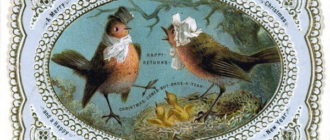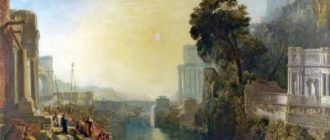
After the Rain is a painting by Arkhip Ivanovich Kuindzhi in 1879. Most of the canvas is occupied by the image of the sky with dark thunderclouds extending towards the horizon. The foreground is in shadow and barely outlined. The viewer involuntarily turns his gaze to the meadow flooded with light in the center of the composition. The lush green grass washed by the rain seems to sparkle from the inside. A lonely grazing brown horse and a small farm with squat houses located on a hillock add touchingness to the plot.
Title of the painting: “After the Rain”.
Author: Arkhip Kuindzhi (1842-1910).
Year of writing: 1879
Dimensions: 102 x 159 cm.
Style: Realism.
Genre: Landscape.
Technique: Oil painting.
Material: Canvas.
Location: State Tretyakov Gallery, Moscow.
Arkhip Kuindzhi is a famous Russian artist, one of the brightest landscape painters of the second half of the 19th – early 20th centuries.
He was attracted by the wonderful views of the northern expanses of Russia and the captivating beauty of his native Ukraine. He did not recognize traditions in art, he was constantly looking for new methods and techniques to convey emotional impressions more expressively.
The painting “After the Rain” is notable for its dynamics and traditional national flavor, recalls scenes from the works of Gogol describing Ukrainian landscapes. Spending a lot of time in the open air and carefully observing the slightest changes in nature, Kuindzhi conveys the effects of lighting as accurately as possible.
To depict the power of the thunderstorm, he uses innovative painting techniques and the technique of a separate brushstroke. The work is as if electrified by the movement of gray-lilac clouds with shades of pink, green, purple. The master achieves glow effects with smears and light and shadow contrasts.
Painting After the Rain by Arkhip Kuindzhi – a temperamental landscape by the great master
Work on creating expressive tonal relationships absorbed the artist entirely. But the combination of the simplicity of the plot with the carefully calibrated composition is also remarkable. On canvas, Kuindzhi presented only two horizontal color planes that contrast, animate and complement each other. And according to the same principle, he crossed the grassy zone with a vertical winding rivulet with dark, bluish-black water.
The painting “After the Rain” by Arkhip Kuindzhi was presented to the public in the same year and aroused keen interest and enthusiastic responses in the press. At the seventh exhibition of the Itinerants, crowds of visitors gathered in the hall near it, looked at it for a long time and were surprised at the novelty of the work. But there were also those who reproached the artist for greed and the use of special effects to attract more clients.
However, the master soon moved away from secular society and stopped exhibiting. Until the end of his life, he created similar landscapes for himself, depicting fleeting moments of nature in numerous sketches.






